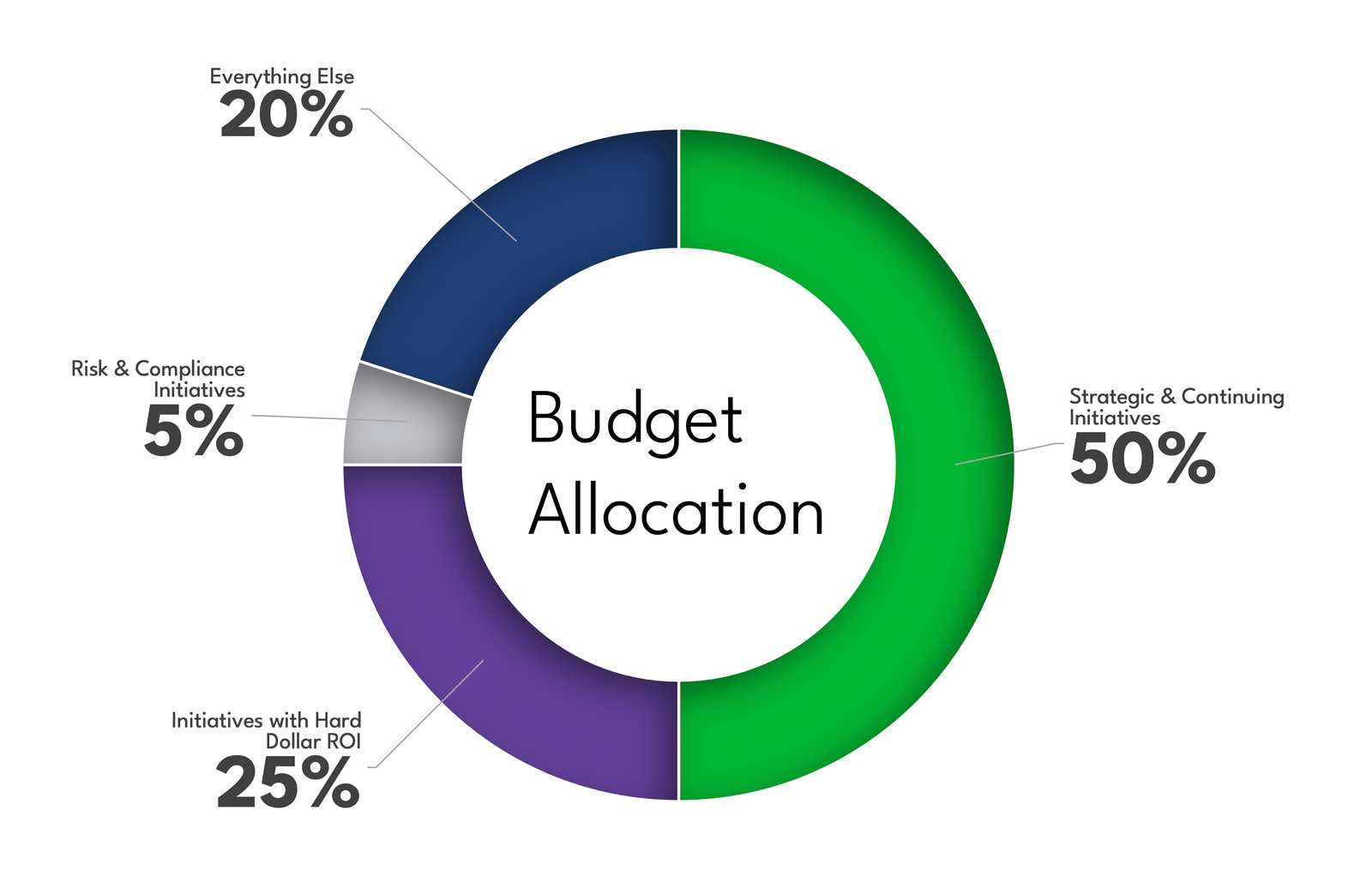In today’s complex IT landscape, CIOs must move beyond traditional budget prioritization approaches that rely on the corporate objectives and embrace value-based planning—a structured framework that prioritizes and funds technology initiatives based on their impact across corporate objectives, business operations, strategic imperatives, and innovation.
By shifting to a value-based planning model, IT leaders can:
Align investments with business priorities beyond just corporate goals
Balance long-term vision with short-term adaptability
Position IT as a key driver of enterprise success
The challenge isn’t just about proving IT’s worth, it’s about ensuring that every dollar invested in technology drives meaningful business outcomes.
But how do you operationalize value-based planning in a way that makes prioritization simple and effective? Here’s a practical approach that every IT organization can implement:
 Prioritize Continuing Multi-year Projects First
Prioritize Continuing Multi-year Projects First
At the top of the IT planning priorities should be multi-year projects or ongoing initiatives that are carrying over from previous years. These projects have already been vetted and approved—so long as they are being executed well and there’s no compelling reason to halt funding, they should remain a priority.
 Address Risk & Compliance Needs
Address Risk & Compliance Needs
Next, prioritize projects that mitigate risk or ensure compliance with financial, legal, regulatory, or technological requirements. These initiatives safeguard the enterprise from potential disruptions and penalties.
 Fund Strategic Initiatives That Drive Long-Term Growth
Fund Strategic Initiatives That Drive Long-Term Growth
Strategic initiatives aligned with corporate objectives or enterprise KPIs should come next. While these projects may not always have (immediate) hard-dollar benefits, they are critical for long-term success of the corporate strategy.
 Invest in Projects with Clear Hard-Dollar Benefits
Invest in Projects with Clear Hard-Dollar Benefits
Technology initiatives that generate tangible financial returns – whether through revenue growth, cost reduction, or efficiency gains – should follow next. In certain cases, it may be appropriate to rank these initiatives than strategic projects, depending on financial priorities, industry dynamics, and corporate strategy.
 Allocate Remaining Budget for Business-Driven Initiatives
Allocate Remaining Budget for Business-Driven Initiatives
Next, prioritize projects that mitigate risk or ensure compliance with financial, legal, regulatory, or technological requirements. These initiatives safeguard the enterprise from potential disruptions and penalties.
Final Thoughts
IT Strategy’s role in allocating funding to priorities
The IT strategy/roadmap should play a big role in deciding how much funding is allocated to the various priorities listed above. Based on the maturity of the current digital and technology capabilities within the organization, the business strategy and direction, and the associated technology strategy and roadmap, the IT leadership team must make conscious and deliberate decisions on what proportion of the budget is allocated to these initiative types.
For instance, growth and innovation focused Technology departments that I have been part of at Novartis and BNSF used to roughly allocate about 50% of the IT budget to strategic and continuing initiatives. Initiatives with hard-dollar ROI would get anywhere from 15-25% of the budget, risk and compliance between 5-10% and the rest was allocated to business-driven initiatives without any of the afore-mentioned justifications.

Secondly, when applying a value-based prioritization framework, CIOs must maintain close alignment with business unit leaders. Communicating the value delivered through the IT initiative portfolio to all the senior business leaders and executives is imperative for success.

